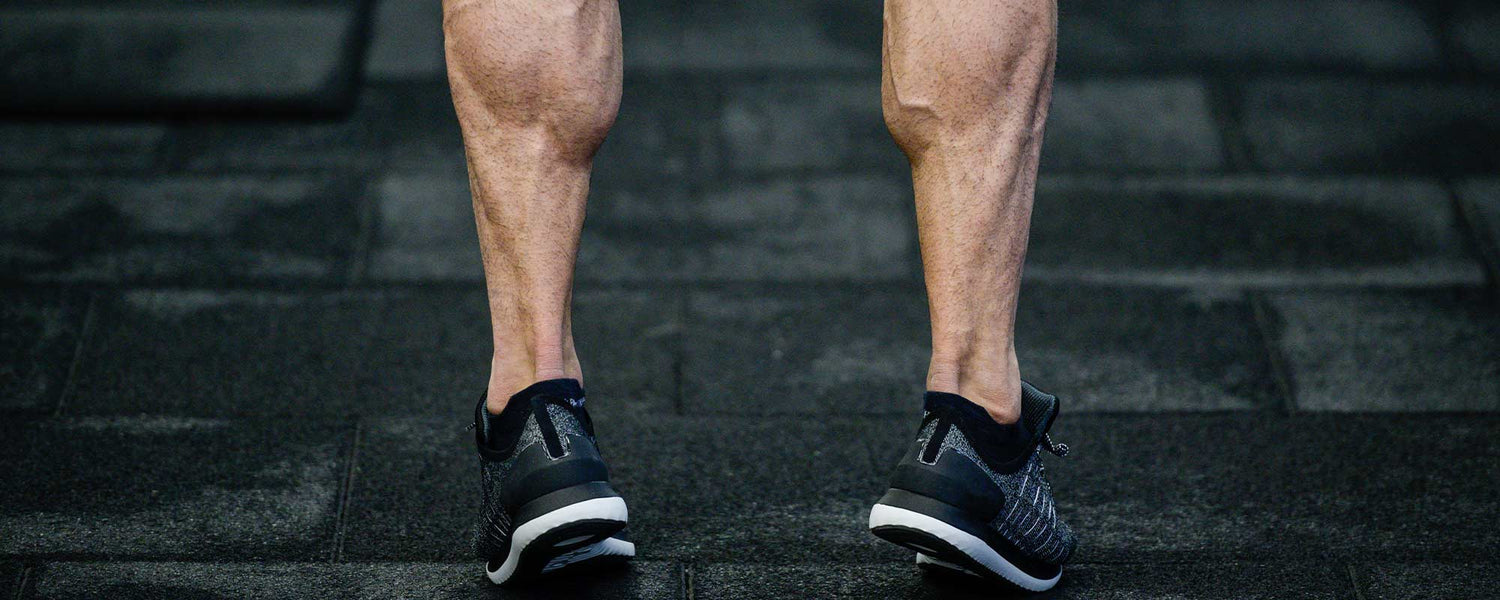Table of content
When planning the workout routine, we mostly think about strengthening our upper body muscles, such as arm muscles. We totally ignore our lower body muscles. And if we even think about training our lower body, we will focus only on running. The part that is ignored the most by us when doing the workout is the calf muscles. These muscles are very important for our running and walking. We don’t give a specific focus on this kind of muscle.
1. What Are Calf Muscles?
Calf muscles are the group of muscles in our body that are present in the back of our lower legs. The calf group muscles comprise of these three muscles;
Gastrocnemius muscles
Soleus muscles
Plantaris muscles
Gastrocnemius muscles are the largest among these muscles, and the other two muscles are smaller muscles. There is a tendon named Achilles, which serves as a connection point between calf muscles and heel bone.
2. What Are Calf Raises?
Calf raises, as the name suggests, means raising your calf muscles. Calf raises are the type of exercise in which you focus on your calf muscles. You move your heels upward while keeping the other part of your foot on the ground. This strengthens your calf muscles, helping you in walking, running, and any other kind of exercise or work in which your calf muscles are involved.
3. What Are the Types of Calf Raises?
Calf raises have different types based on how you raise your heels. Following are some of its types;
Single Leg/Unilateral Calf Raises
Double Leg/Bilateral Calf Raises
Standing Calf Raises
Sitting Calf Raises
Bench Press Calf Raises
Bodyweight Calf Raises
3.1 Single Leg/Unilateral Calf Raises
Single-leg calf raises are the first type of calf raises in which you focus on only one leg at a time. It is also known as unilateral calf raises. You keep your one foot on the ground and raise the heels of your other foot. This type of calf raise is important in which you think you have muscle imbalances in terms of strength. You can focus on the calf muscles of that leg in which you think muscles are weaker than the other leg’s calf muscles.
3.2 Double Leg/Bilateral Calf Raises
Double leg or bilateral calf raises are the second type of calf raise in which you focus on both your legs at the same time. You raise both your heels at the same time, and it strengthens both your calf muscles.
3.3 Standing Calf Raises
Standing calf raises are done while standing. In standing calf raises, you stand on the balls of your feet, i.e., you raise your feet from the backside as high as possible. However, you can do it without using any equipment. If you use equipment, it will be more beneficial for you. You can use some machine or any other equipment to put more resistance to you. It will help strengthen your calf muscles further.
3.4 Sitting Calf Raises
While other types of calf raises focus on all calf muscles in the back of your legs, sitting calf raises focus on the soleus muscles of your calf. Sitting calf raises are done while sitting. For doing the sitting calf raises, you will sit on anything, most probably on the chair, and you raise the balls (heels) of your feet. This puts a strain and pressure on your calf muscles. They contract by doing these sitting calf raises, and it helps strengthen your calf raises.
3.5 Bench Press Calf Raises
Bench press calf raises are done with the help of a bench press machine. Bench press, as the name suggests, pushes or presses the bench with the help of your legs. In bench press calf raises, you do regular bench press, but you don’t press with all your feet lying on the surface. You push or press the bench with the help of only your upper foot. This has much more effect on your calf than other types of calf raises.
3.6 Bodyweight Calf Raises
Bodyweight calf raises are the type of exercise in which you do calf raises without using any additional equipment. You just stand and raise your heels while putting your weight on tiptoes. It contracts your calf muscles, and this contraction helps strengthen your calf muscles.
4. Calf Raises With Equipment or Without Equipment: Which One is Better?
Choosing and deciding out of the calf raises with equipment or without equipment depends on many things. Both can be better depending on the factors you use to compare both. Let's discuss all these factors one by one.
Going to the gym is not affordable for everyone. Some may not find time to go to the gym daily. Some may not find the gym financially right for them. So the gym is not the best option for everyone. So, doing the calf raises without equipment is best for this kind of people.
Another thing which is a factor in choosing calf raises with equipment or without equipment is the strength of the calf raises you want to achieve. Doing the calf raises without any equipment does not provide higher strength to your calf muscles. To gain more strength in your calf raises, you have to use some form of equipment. Many equipment can be used depending on the type of calf raise you want to do. Such as bench press, calf raise bar, seated calf raise machine and many others. Some are specific, while others you can use as equipment for building your calf muscles.
The third thing that can be a factor for some people is the time frame within which they want to increase the strength of their calf muscles. If you want to increase the strength of your calf muscles in less time, you definitely have to use some form of equipment. Otherwise, you can’t build your calf muscles in less time. Doing without equipment helps build the calf muscles, but you need more time for it.
The last thing that serves as a factor in deciding which one to use for increasing the strength of your calf muscles is the type of muscles you want to put your focus on. If the focus is the soleus muscles in your calf, then you have to go for calf raises with equipment. Seated calf raises are used to focus on your soleus muscles.
You can use any type for doing calf raises. Both are effective and increase the strength of your calf muscles. But if you want to achieve that in a shorter time frame, switch to calf raises with equipment.
5. Calf Raise Variations
There are three variations of calf raises.
If you point your toes outward, you are focusing more on your inner calves.
If you point your toes inward, you are focusing more on your outer calves.
If you are pointing your toes straight, then you will work on the inner calves and outer calves evenly.
6. How Can You Do the Calf Raises Perfectly?

The overall procedure for doing the calf raises perfectly depends on the type of calf raises you are doing. But the leg movement is the same in all calf raises. Follow the steps given below to do the calf raises in the correct way;
Stand and keep yourself straight.
Keep your feet flat on the ground.
Keep your feet in such a way that the distance between your feet should be equal to the width of your shoulders.
Your knees should not be straight. Bend them slightly. This will avoid you putting extra stress and strain on your joints.
Keep your upper body or back in a straight position.
Now, after adjusting and setting your posture in the manner above.
Slightly move your heels off the ground and move them to the top as high as you can.
After moving your heels to the highest position, lower them to the ground again as low as you can.
Move your heels slowly and smoothly.
Don’t rush, and don’t do it fast.
While moving your heels, actively contract your calf muscles in the lower back of your legs.
Add some weight, such as barbells or dumbbells, to put extra strain on your calf muscles. This will help you increase the strength of your calf muscles even further.
7. Last Words
Calf raises are very important part of our exercise. They are very helpful in increasing the strength of your calf muscles in the lower back of your legs. The strength helps in many things, such as running and walking. If you are an athlete, the strength will help you a lot in performing better. The strength of your calf muscles will increase your performance many times. Particularly if you are an athlete in Brazilian Jiu-Jitsu, you are going to find this strength in your calf muscles helpful in executing moves and techniques over your opponent that are specific to your legs, such as leg locks, triangle chokes with your legs, etc.
8. Frequently Asked Questions
8.1 What is the Correct Way to Do Calf Raises?
Stand and keep your feet in such a way that the distance between your feet should be equal to the width of your shoulders.
Your knees should not be straight. Bend them slightly. This will avoid you putting extra stress and strain on your joints.
Slightly move your heels off the ground and move them to the top as high as you can.
After moving your heels to the highest position, lower them to the ground again as low as you can.
While moving your heels, actively contract your calf muscles in the lower back of your legs.
Add some weight, such as barbells or dumbbells, to put extra strain on your calf muscles. This will help you increase the strength of your calf muscles even further.
8.2 How Many Variations of Calf Raises Are There?
There are three variations of calf raises.
If you point your toes outward, you are focusing more on your inner calves.
If you point your toes inward, you are focusing more on your outer calves.
If you are pointing your toes straight, then you will work on the inner calves and outer calves evenly.
8.3 Calf Raises With Equipment or Without Equipment: Which One is Better?
Choosing and deciding out of the calf raises with equipment or without equipment depends on many things. Both can be better depending on the factors you use to compare both. You can use any type for doing calf raises. Both are effective and increase the strength of your calf muscles. But if you want to achieve that in a shorter time frame, switch to calf raises with equipment. Also if the focus is the soleus muscles in your calf, then you have to go for calf raises with equipment. Seated calf raises are used to focus on your soleus muscles.
8.4 How Many Types of Calf Raises Are There?
Calf raises have different types based on how you raise your heels. Following are some of its types;
Single Leg/Unilateral Calf Raises
Double Leg/Bilateral Calf Raises
Standing Calf Raises
Sitting Calf Raises
Bench Press Calf Raises
Bodyweight Calf Raises









Leave a comment
This site is protected by hCaptcha and the hCaptcha Privacy Policy and Terms of Service apply.